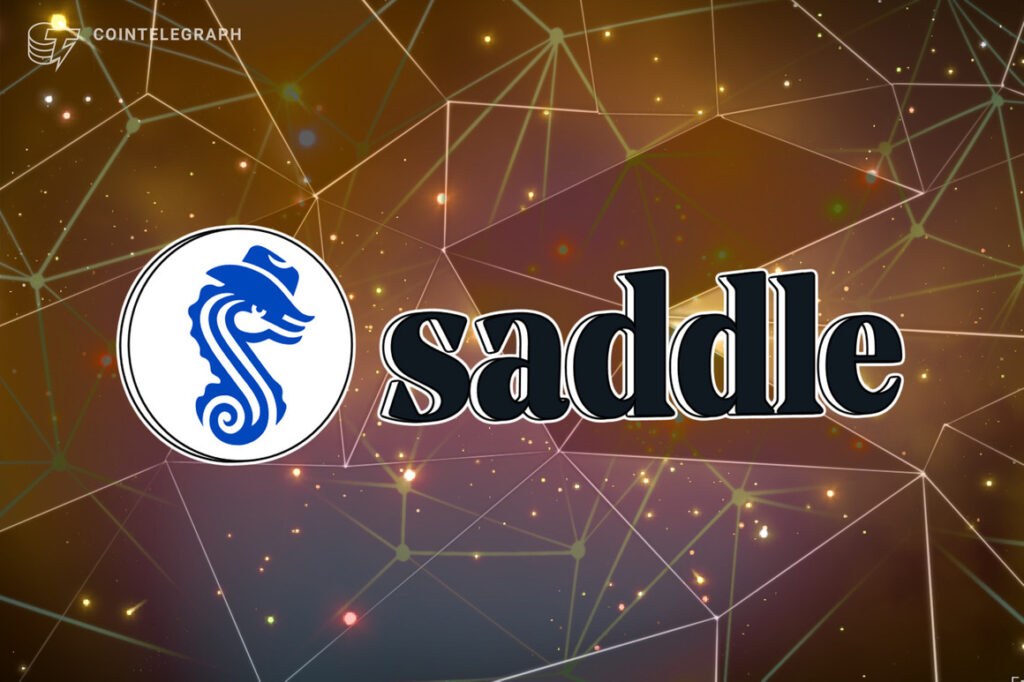Saddle Financea multichain decentralized automated market maker (AMM), ended the first vesting stage for its native token, Saddle Finance (SDL) on Thursday, June 23, 2022.
All community members that helped Saddle by providing funds to its liquidity pools are receiving access to their tokens so tokenholders can trade and transact SDL.
Users can stake SDL, earn rewards on Saddle Exchange and receive vested SDL (veSDL) tokens. They can also trade SDL or provide liquidity to SushiSwap’s SDL and Ether (ETH) pair on SushiSwap
Saddle’s tokenomics and community governance
Inspired by the popular vote-escrow model, veSDL is the governance token that allows the Saddle community to manage the protocol. Stakers can vote on SDL-provision to liquidity pools and manage the supply.
Saddle’s tokenomics were designed for veSDL’s linear decay: Users are incentivized to keep staked funds, as staking at lower token prices maximizes yield returns. Another benefit is that pressure to sell SDL diminishes, fostering sustainable price actions.
Saddle has further initiatives with the support of its community. These milestones include the migration to on-chain governance, adding liquidity to SDL through Tokemak and introducing a new gauge for stakers to unlock extra yield boosts.
Saddle also intends to issue bonds through Olympus Pro to generate more protocol-owned value, launch a borrowing function against liquidity providers, add leveraged-yield farming with Rari Capital’s Fuse protocol, and collect airdrops and admin fees from select Sempi — Saddle maximum ecosystem- proliferation initiative — partners.
In its roadmap, the team includes virtual swap improvements, the launch of new liquidity pools for SDL stakers and a new service for users to deploy customizable Saddle pools.
About Saddle
Saddle is an AMM decentralized exchange (DEX) available on the Ethereum, Fantom, Arbitrum, Optimism and Evmos blockchains. It has facilitated more than $2 billion in transaction volume to date.
Saddle’s DEX is optimized for trading stablecoins and pegged-value crypto assets, including Wrapped Ether (WETH) and Wrapped Bitcoin (WBTC). The protocol features an easy-to-use interface, ideal for beginners and seasoned decentralized finance (DeFi) investors. All trades are swift, cost-efficient and have minimal slippage.
The Saddle team’s values are rooted in community-building, decentralization and expanding the DeFi space. Saddle wants to help bring AMMs onto any blockchain and pegged-asset swap primitives to DeFi. It’s backed by several renowned venture capital firms such as Coinbase Ventures, Framework, Polychain Capital, Dragonfly Capital and more.
Saddle’s code is 100% open source, and the team welcomes anyone to contribute to its protocol. Through the recent Simpi initiative, Web3 developers can join Saddle’s mission and develop with the protocol or, alternatively, fork the code.
Another selling point of Saddle is its robust security: All smart contracts have been thoroughly audited by leading blockchain-security companies such as Certik, Quantstamp, and OpenZeppelin.
For more updates, follow:
This is a paid press release. Cointelegraph does not endorse and is not responsible for or liable for any content, accuracy, quality, advertising, products, or other materials on this page. Readers should do their own research before taking any actions related to the company. Cointelegraph is not responsible, directly or indirectly, for any damage or loss caused or alleged to be caused by or in connection with the use of or reliance on any content, goods, or services mentioned in the press release.

